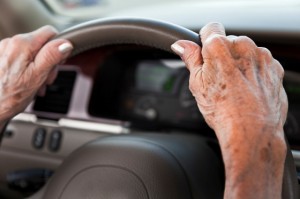Although business drivers might hesitate to admit it, many will attribute human-like qualities to their car, known as anthropomorphising. This could be as simple as treating it as male or female or even giving it a name. So, if some people treat their car more like a person, does this influence the way in which they drive?
 In 2007 researchers from Colorado State University conducted a study to analyse if drivers were giving their cars human characteristics, and whether this tendency was associated with different driving behaviours. They asked each participant whether their car was male or female and if their car had a name. Additionally, they asked each participant to complete a questionnaire in which they reported their own personality characteristics. Participants were also asked to imagine their car’s “personality” and to complete another questionnaire giving those details.
In 2007 researchers from Colorado State University conducted a study to analyse if drivers were giving their cars human characteristics, and whether this tendency was associated with different driving behaviours. They asked each participant whether their car was male or female and if their car had a name. Additionally, they asked each participant to complete a questionnaire in which they reported their own personality characteristics. Participants were also asked to imagine their car’s “personality” and to complete another questionnaire giving those details.
Nearly half of the participants reported that they assigned a sex to their car, with 28% reporting that their car was female and 20% reporting that their car was male. The researchers found significant differences in behaviour traits between those who gave their car a sex and those who did not. People who classified their car as either male or female reported having higher levels of driving aggression than those who did not but surprisingly there was no difference in driving behaviour between people with ‘male cars’ and those with ‘female cars’.
When it came to naming their cars, just over a quarter of the participants admitted they did. In contrast to those who assigned a sex to their car, there were no differences in driving behaviour between those who named their car and those who didn’t. The researchers also looked at whether the type of name that was given to a car was associated with the owner’s driving behaviour. Car names were classified as either aggressive (e.g. Rambo) or non-aggressive (e.g. Tigger), but still there was no difference in driving behaviour between these drivers.
Possibly the most interesting aspect of the study was the findings relating to the driver’s and the car’s own personalities. The researchers examined five personality traits: agreeableness, extraversion, conscientiousness, openness and neuroticism.
Firstly, there were correlations between the driver’s and the car’s personalities but they were relatively small. This is important, as it means that drivers were not simply projecting their own personality onto their car. If this were the case, the two personality measures would be perfectly correlated. The small correlations suggest that drivers perceive their cars as having their own personalities, with distinct and independent traits.
For both the driver’s and the car’s personality, the traits of extraversion, agreeableness and conscientiousness are the best predictors of aggressive driving. Driving is more aggressive if people are highly extraverted or score low on agreeableness or conscientiousness. However, the most important aspect of the analysis examined whether the driver’s or the car’s personality was the best predictor of aggressive behaviour.
Amazingly, for some aspects of driving behaviour, the car’s personality was a better predictor than the driver’s personality! If a car was viewed as not having a very agreeable or conscientious personality, the driver tended to express their anger through their use of the vehicle, for example flashing their lights or driving too close to another car. Drivers of cars with low agreeableness also reported higher levels of aggressiveness on a number of scales, including being verbally and physically aggressive whilst driving.
What is particularly important in this study is that, in some cases, the personality that is attributed to a car by its driver seems to influence driving behaviour. So it may be that drivers are attempting to separate themselves from their aggressive driving behaviours by “blaming” the personality characteristics of the car that they are driving. This leaves us with the very interesting conclusion that we can reduce our aggressive driving by viewing our cars as less aggressive and extraverted, and instead as more agreeable and conscientious.
Dr Victoria Bourne (BA Hons, DPhil)
Consultant to Driving Risk Management Limited








